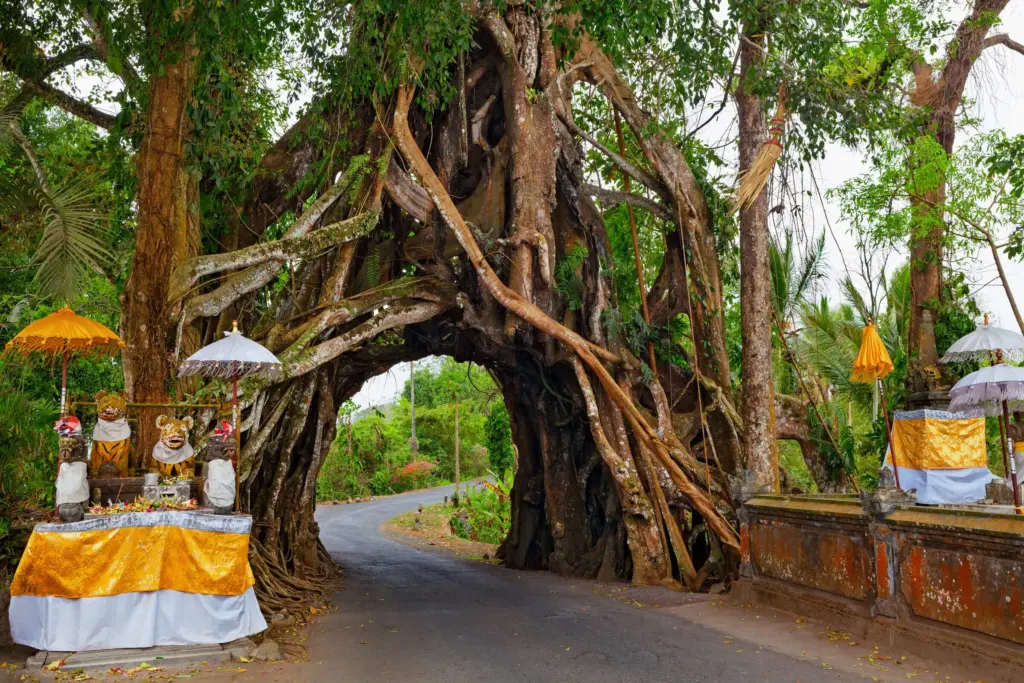Bali is blessed with landscapes that range from emerald rice terraces to dramatic coastal cliffs, crystal-clear lagoons, and ancient volcanic peaks. While many travellers are drawn to famous landmarks, the island also hides lesser-known treasures waiting to be explored. This guide combines Bali’s best-known natural attractions with off-the-beaten-path spots, giving you a richer and more varied travel experience. Whether you want panoramic mountain views, peaceful jungle walks, or untouched beaches, Bali’s natural wonders deliver moments you will never forget.
WELL-KNOWN NATURAL ATTRACTIONS IN BALI
Jatiluwih Rice Terraces
A UNESCO World Heritage Site, Jatiluwih stretches across the fertile slopes of Mount Batukaru in West Bali. Its sweeping terraces showcase Bali’s traditional subak irrigation system, a practice dating back over a thousand years.
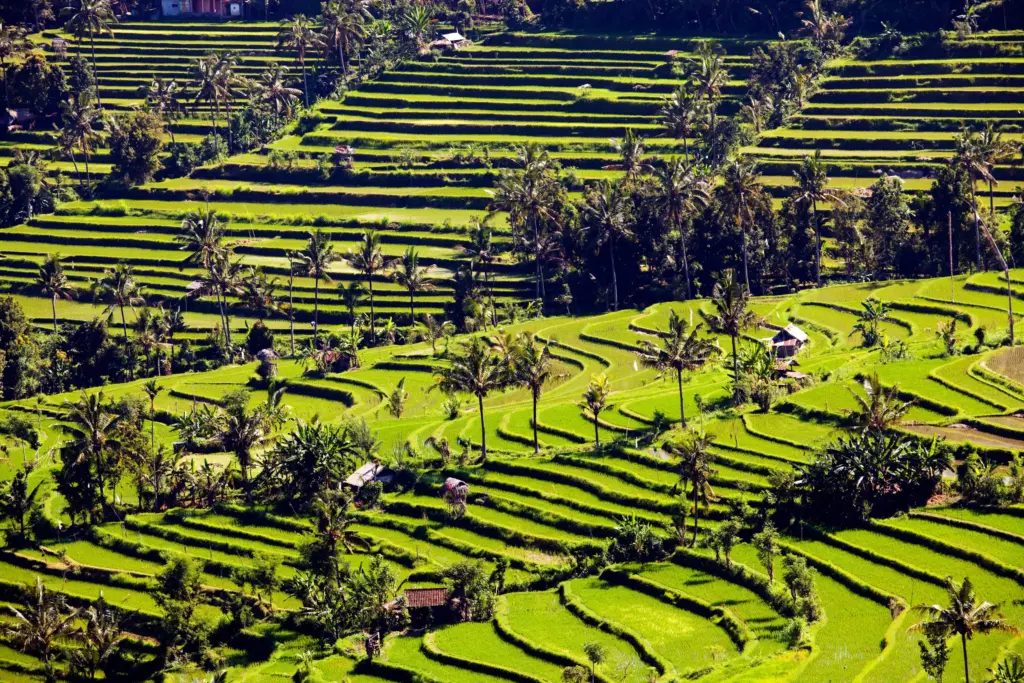
The cool climate, peaceful atmosphere, and scenic walking or cycling routes make it an ideal escape from the crowded south. Sunrise and late afternoon provide the most photogenic light over the green waves of rice paddies.
Mount Agung
Towering at over 3,000 metres, Mount Agung is Bali’s highest peak and the spiritual centre of the island. Locals believe it is the home of the gods, and it plays a key role in Balinese Hinduism.
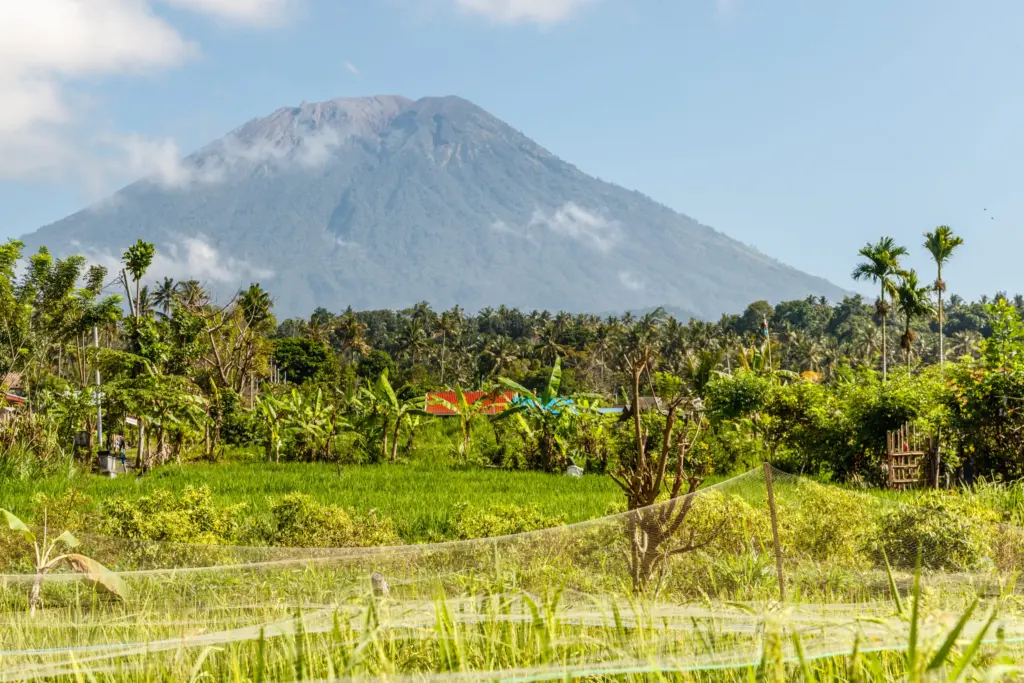
Trekkers can take on the challenging overnight climb to reach the summit at sunrise, revealing breathtaking views over the entire island and neighbouring Lombok. Given its volcanic activity, always check safety updates before planning a trek.
Lake Tamblingan
Nestled in Bali’s northern highlands, Lake Tamblingan is a serene crater lake surrounded by dense rainforest. Mist often hangs over its calm waters in the morning, creating an almost mystical atmosphere.
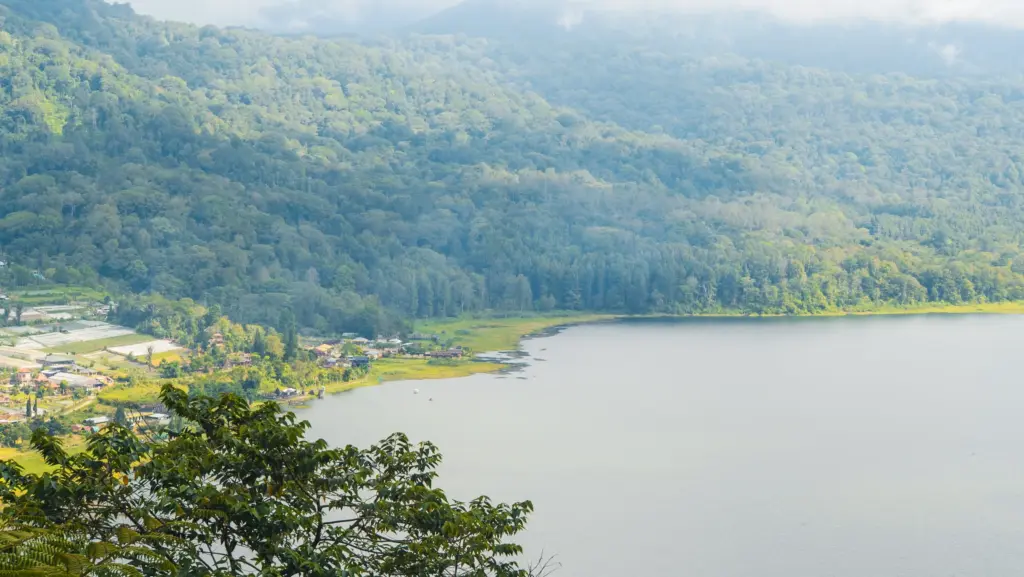
Traditional dugout canoes can be hired for a quiet paddle, and the lake is dotted with small, picturesque temples. Nearby trails connect to Lake Buyan, making it perfect for nature lovers and photographers.
Menjangan Island
Located in West Bali National Park, Menjangan Island is famed for its crystal-clear waters, colourful coral reefs, and abundant marine life. It is one of the best places for snorkelling and diving in Bali, offering excellent visibility and a calm underwater environment. The island is also home to wild deer (menjangan in Indonesian), which you can often spot wandering along the shoreline. Access is by boat from the Pemuteran area.
Bias Tugul Beach
Bias Tugel Beach, located near Candidasa in East Bali, is a small yet stunning stretch of white sand that feels like a hidden escape. Nestled between rocky headlands, it offers calm turquoise waters ideal for swimming and snorkelling, especially in the dry season.
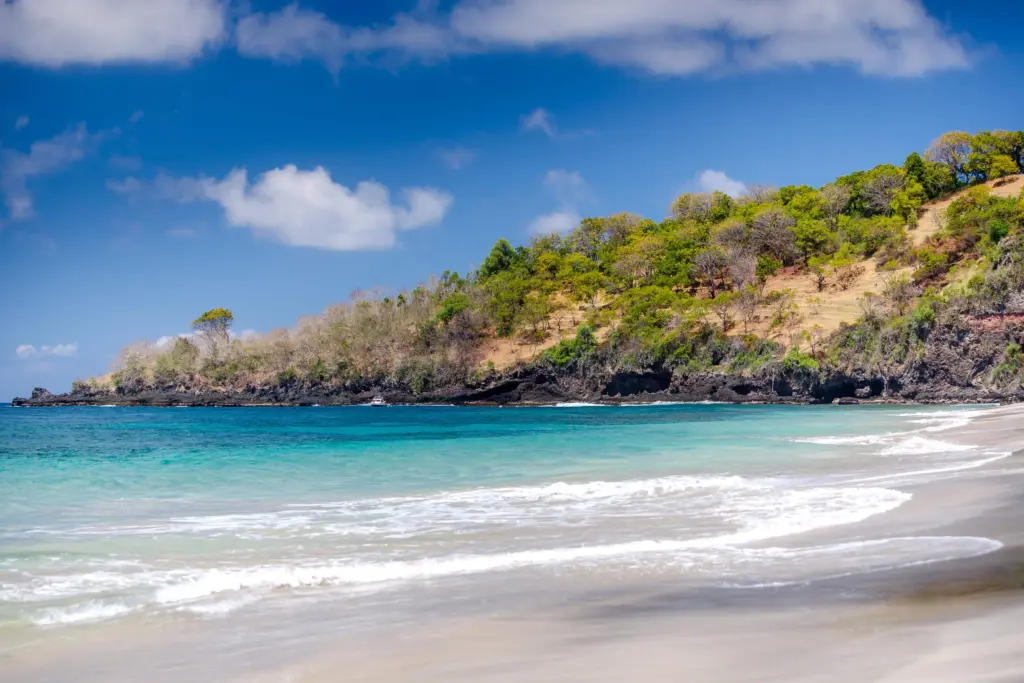
The beach is framed by swaying coconut palms and backed by a few casual warungs serving fresh seafood and cold drinks. Its relatively low profile means it is often quieter than Bali’s more famous beaches, making it perfect for a peaceful day by the sea. Early mornings and weekdays offer the most tranquil experience.
Angel’s Billabong
On Nusa Penida’s rugged coastline, Angel’s Billabong is a natural infinity pool framed by jagged limestone cliffs.
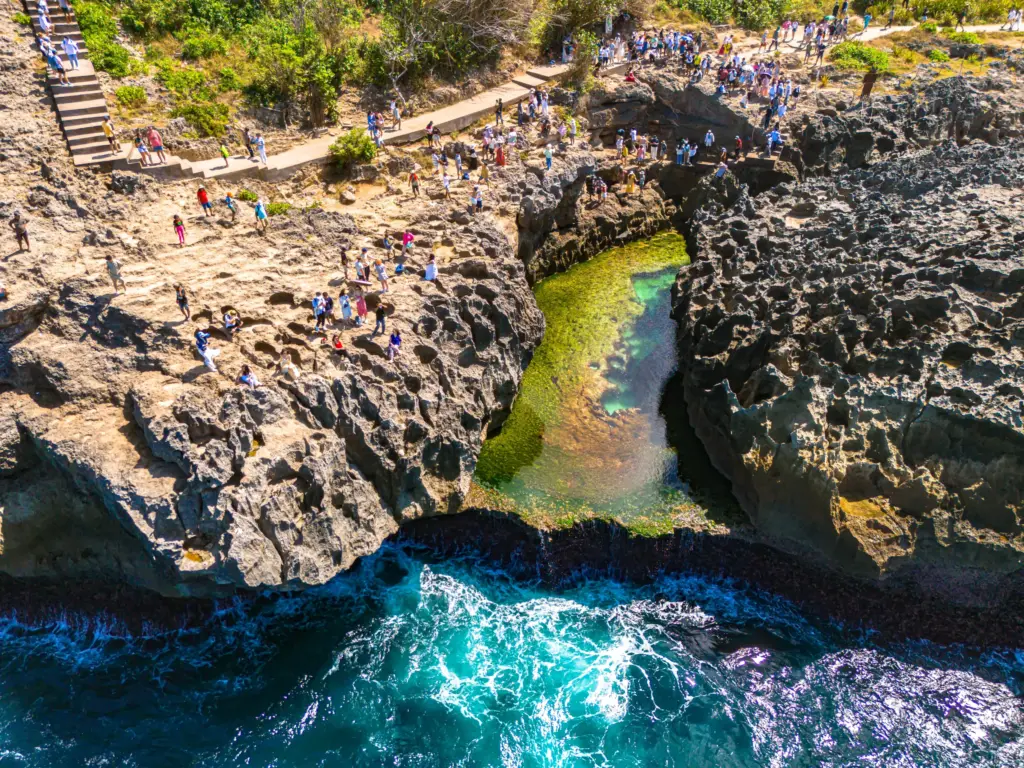
Its crystal-clear tide pool sparkles in shades of turquoise and emerald, especially at low tide when swimming is safe. The views over the Indian Ocean are spectacular, but caution is essential as waves can be unpredictable. Visit early morning to avoid crowds.
Blue Lagoon
Blue Lagoon on Nusa Ceningan is one of Bali’s most striking natural viewpoints, famed for its vivid turquoise waters framed by rugged limestone cliffs. The lagoon is not a swimming spot due to strong currents, but it offers incredible photo opportunities, especially when waves crash dramatically against the rocks. A short walk from the main viewpoint reveals quieter spots for taking in the scenery. Visit during mid-morning or late afternoon for the best light, and combine it with nearby attractions like the Yellow Bridge for a memorable Nusa Ceningan experience.
Devil’s Tears
Also on Nusa Lembongan, Devil’s Tears is a dramatic coastal viewpoint where powerful waves crash against cliffs, sending plumes of spray into the air. It is especially striking at sunset, with golden light illuminating the water spray. The area can be slippery, so keep a safe distance from the edge while enjoying the raw power of nature.
HIDDEN AND LESSER-KNOWN NATURAL GEMS IN BALI
Bukit Cinta
This peaceful viewpoint in East Bali offers one of the most striking vistas of Mount Agung, rising above rice fields and distant coastline. The name means “Hill of Love,” and it is a favourite spot for photographers at sunrise.
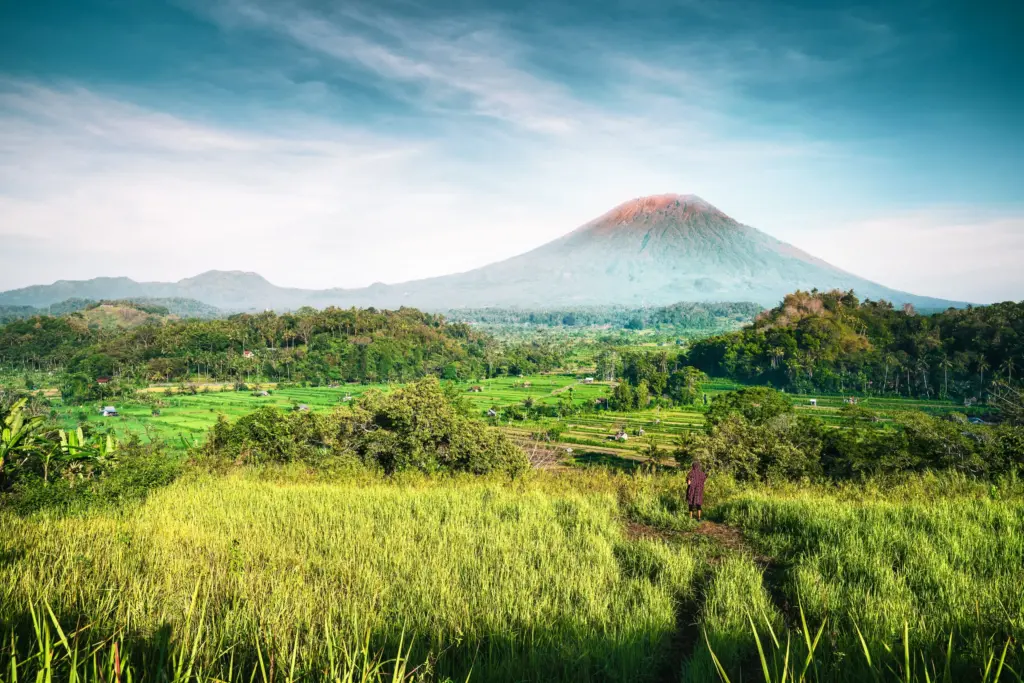
Despite its beauty, it remains relatively quiet compared to other viewpoints, allowing for a more personal experience.
Kanto Lampo Waterfall
Kanto Lampo Waterfall in Gianyar is a picturesque cascade flowing over a series of stepped rock formations.
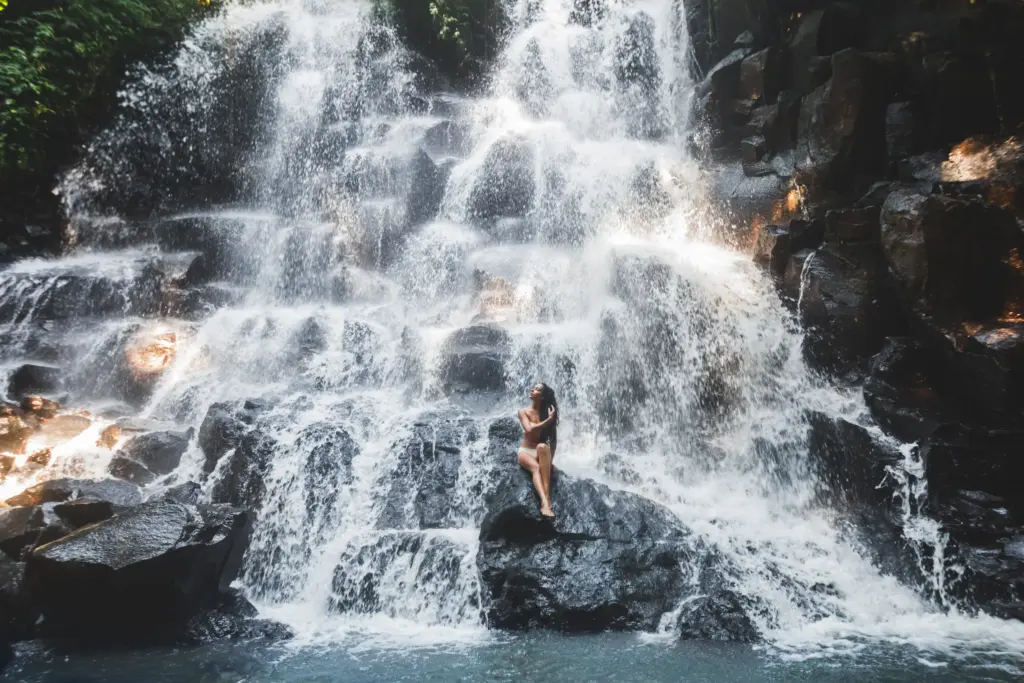
The shallow river at the base makes it a popular spot for wading and taking photos. It is an easily accessible waterfall, reached by a short walk from the parking area, and still feels refreshingly uncrowded in the mornings.
Beji Guwang Hidden Canyon
This narrow, winding gorge near Sukawati is carved by centuries of river flow, with moss-covered rock walls and deep pools. Exploring it requires wading through water and scrambling over rocks, making it a fun, adventurous experience. Guides are available to help navigate the trickier sections safely. It is a striking example of Bali’s raw natural beauty.
Yeh Leh Beach
Located on Bali’s western coast, Yeh Leh is covered in thousands of smooth, wave-polished boulders that stretch along the shoreline. At low tide, tidal pools appear between the rocks, teeming with small marine creatures.
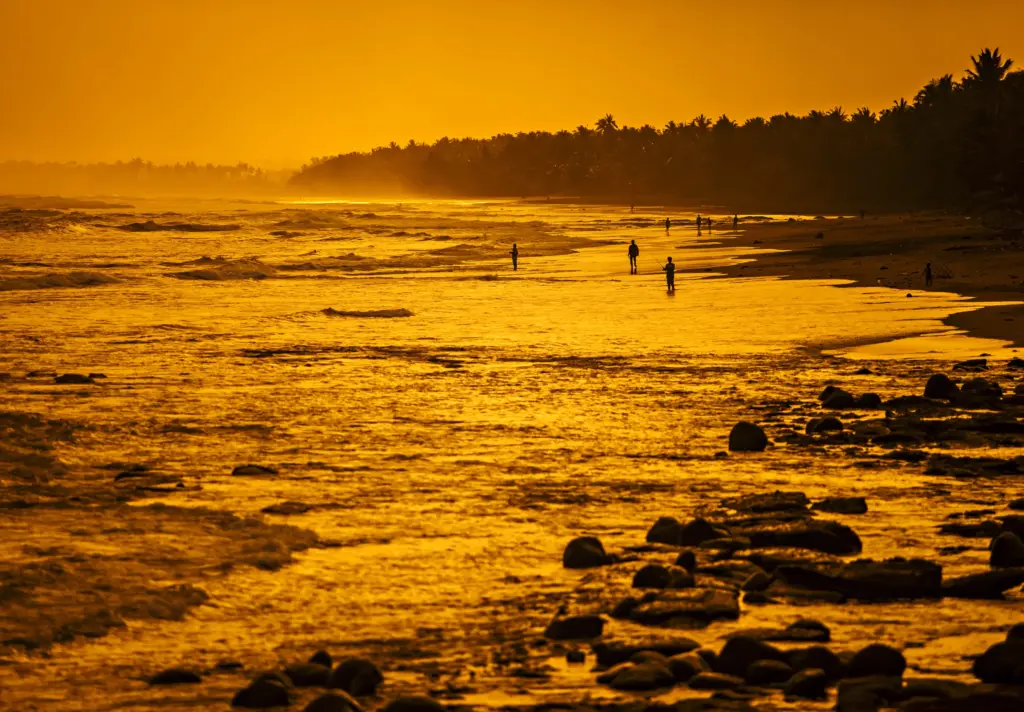
It is a peaceful place for a coastal walk, especially at sunset, and remains a hidden gem even among locals.
Bunut Bolong Tree
In West Bali’s Manggisari village, a massive banyan tree has grown over the road, creating a natural tunnel large enough for cars to pass through. This sacred tree is tied to local folklore and is believed to be protected by spiritual forces. The surrounding area is lush and tranquil, making it worth a detour.
Suluban Cave
Tucked beneath the cliffs at Suluban Beach near Uluwatu, Suluban Cave is a dramatic limestone cavern that opens out to the ocean. Accessible via steep stairs, it feels like a secret pirate hideout, with turquoise waves rolling into the cave mouth. At low tide, you can walk through to connect with neighbouring beaches.
PRACTICAL TIPS FOR VISITING BALI’S NATURAL ATTRACTIONS
Bali’s landscapes are best enjoyed with the right timing, preparation, and respect for the environment.
When to Visit
The dry season (May to September) offers clear skies and calm seas, ideal for hiking, snorkelling, and exploring coastal viewpoints. The wet season (November to March) brings lush greenery and fewer crowds, but some trekking trails and remote beaches may be slippery or inaccessible.
Transport Options
For short distances, renting a scooter gives you flexibility to stop at scenic spots like Kanto Lampo Waterfall or Bukit Cinta. For multi-destination days, hiring a private driver is safer and more comfortable, especially if you plan to combine the ttractions such as Jatiluwih Rice Terraces with other stops.
Packing Tips
Bring a reusable water bottle, comfortable walking shoes or sandals with grip, and a light rain jacket in the wet season. A dry bag is useful for boat trips to Menjangan Island or exploring waterfalls.
Cultural and Environmental Etiquette
Respect local customs when visiting sacred sites. Stick to marked trails at places like Beji Guwang Canyon to protect delicate ecosystems. Avoid littering, use reef-safe sunscreen, and follow local safety guidelines.
Safety
Always check tide times for coastal spots like Angel’s Billabong and Devil’s Tears, and volcanic activity updates for Mount Agung.
SUGGESTED NATURE-FOCUSED ITINERARIES
1. Day Coastal Escape
· Start with sunrise at Bukit Cinta, followed by snorkelling at somewhere like Bias Tugul Beach. After lunch in Padang Bai, head to Yeh Leh Beach for a peaceful sunset.
2. Day Mountain and Lake Adventure
· Day 1: Trek Mount Agung at sunrise (season permitting), then relax at Lake Tamblingan in the afternoon.
· Day 2: Explore Jatiluwih Rice Terraces in the morning, followed by a visit to Bunut Bolong Tree and nearby highland villages.
3. Day Island and Waterfall Explorer
· Day 1: Snorkel or dive at Menjangan Island in West Bali National Park.
· Day 2: Visit Kanto Lampo Waterfall, Beji Guwang Canyon, and surrounding jungle trails.
· Day 3: Ferry to Nusa Penida for Angel’s Billabong, Devil’s Tears, and a coastal walk to hidden viewpoints.
5. Day Mixed Highlights
Combine all of the above with relaxed days in between for exploring local markets, sampling regional dishes, or joining a guided cycling tour through Bali’s countryside.
Bali’s natural beauty is as diverse as it is captivating, offering travellers everything from sweeping rice terraces and towering volcanoes to secluded beaches and dramatic coastal cliffs. Whether you are drawn to the island’s iconic landmarks or its lesser-known treasures, exploring these landscapes promises a journey filled with unforgettable moments. Each site has its own rhythm – from the stillness of Lake Tamblingan’s morning mist to the raw power of Devil’s Tears.
By mixing well-known highlights like Jatiluwih and Mount Agung with hidden gems such as Bukit Cinta or Suluban Cave, you can experience a deeper, more personal side of the island. Respect for Bali’s environment and traditions ensures that these places remain pristine for future visitors. With thoughtful planning and a willingness to venture beyond the usual routes, your time among Bali’s natural wonders will be both rewarding and enriching, leaving you with a strong connection to the island’s wild and sacred landscapes. Wander Beyond Ordinary!
